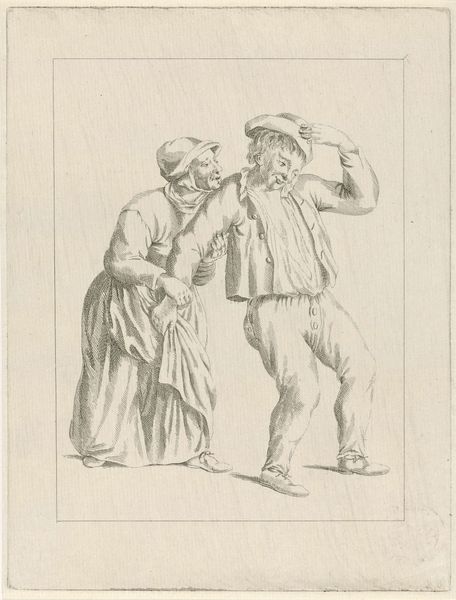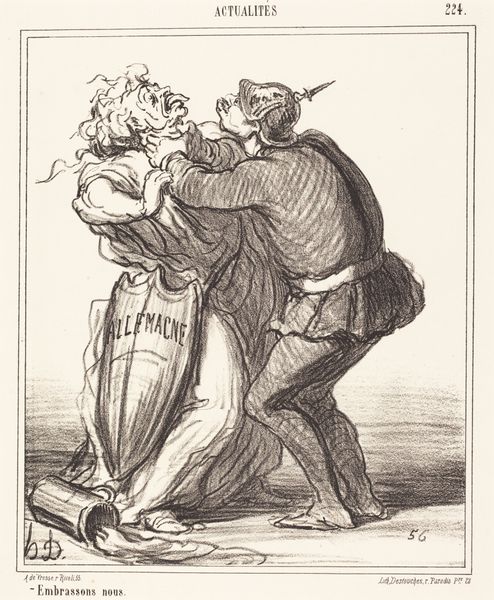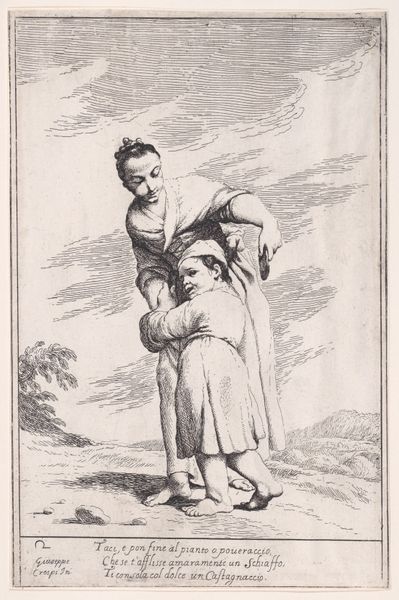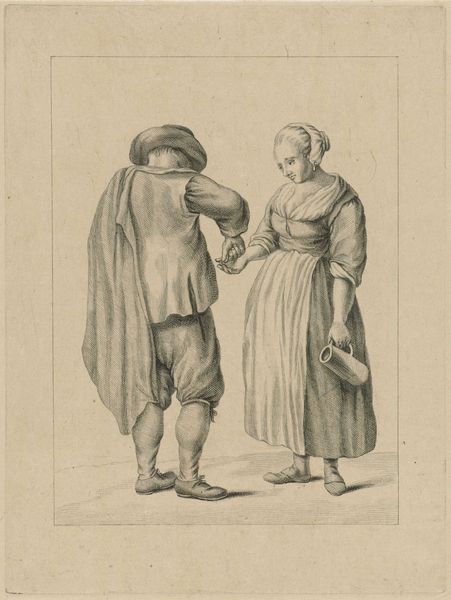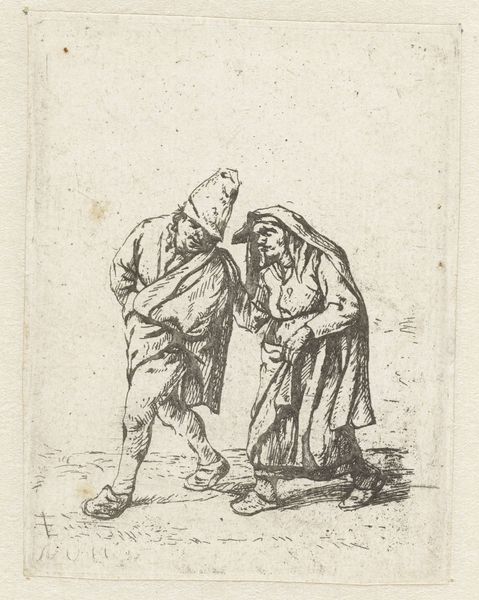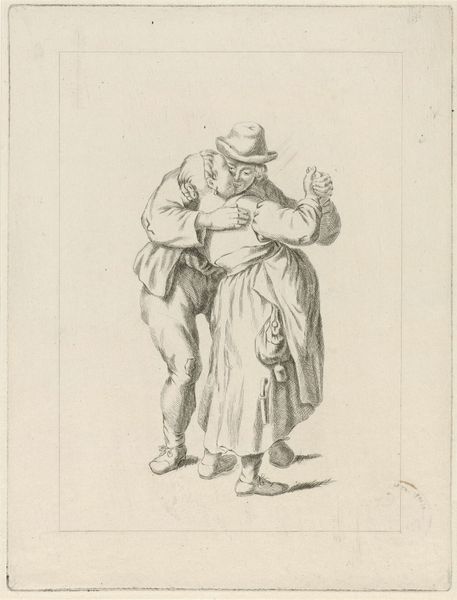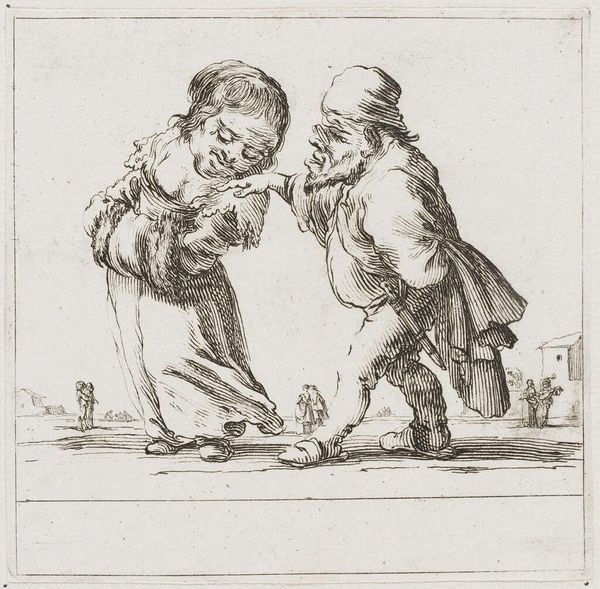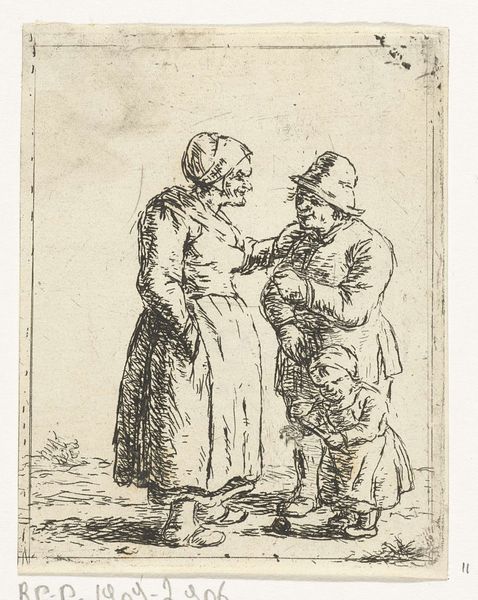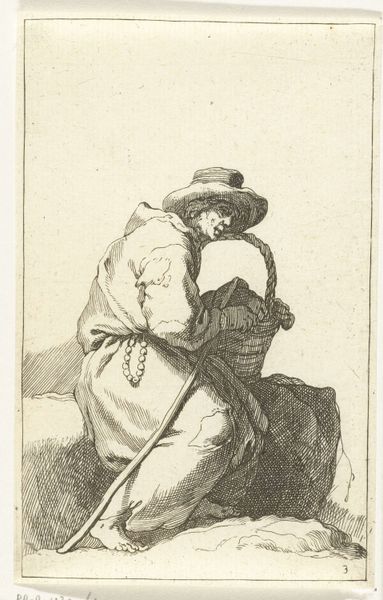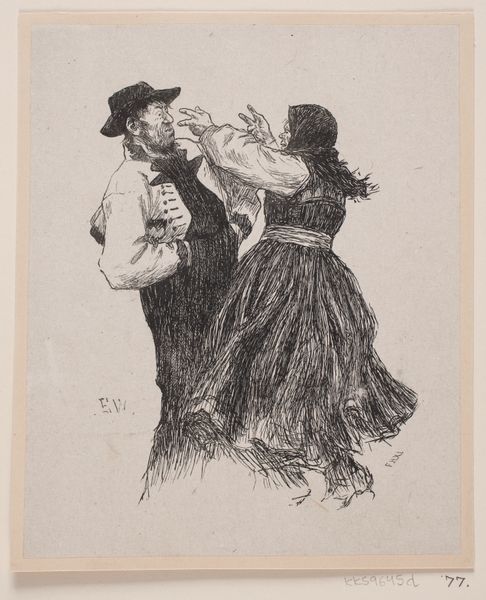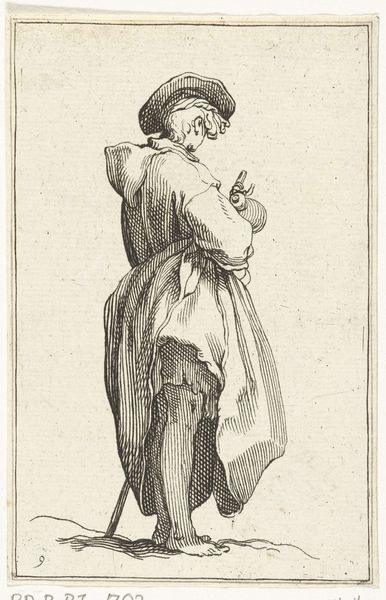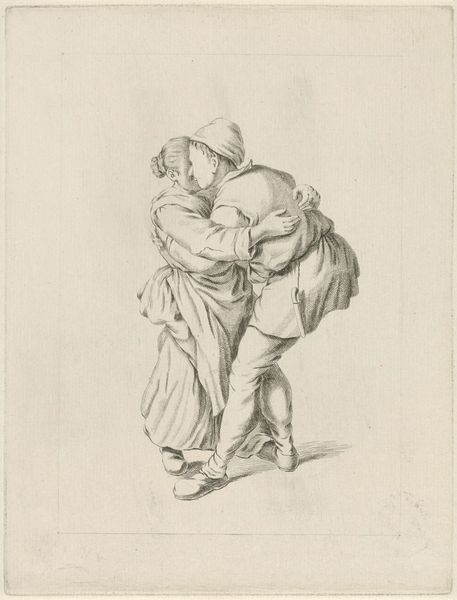
drawing, pencil
#
portrait
#
pencil drawn
#
drawing
#
pencil sketch
#
charcoal drawing
#
pencil drawing
#
pencil
#
portrait drawing
#
genre-painting
#
academic-art
#
realism
Dimensions: height 230 mm, width 173 mm
Copyright: Rijks Museum: Open Domain
Curator: Pieter de Mare's "Vrouw met dronken man," created between 1768 and 1796, offers a fascinating glimpse into genre painting from that era, using humble pencil medium. Editor: Immediately, the sketch’s raw honesty grabs me; it's so stark. The stark contrast reveals an unsettling imbalance of power. There's a strong angularity to the rendering of forms, quite remarkable. Curator: Indeed. Look at the confident strokes defining the woman's form versus the shakier, more uncertain lines portraying the man. The artist masterfully uses line variation to convey the central theme: a genre scene steeped in social commentary. Academic art sought to represent reality, warts and all. Editor: It's how the lines either define the solidness or indicate imbalance. Take his hat—it teeters precariously. Semiotically, the skewed hat stands in opposition to her tight scarf, representing the inverse state they exist in: loss of control contrasted against stoic governance. Curator: And how does this pencil drawing relate to societal power structures? The drunk man serves as an archetype of societal failings and the plight of the working class in 18th-century Dutch society. De Mare highlights how vulnerable individuals can be. Consider how artistic patronage shaped artistic choices. This image was perhaps intended to elicit feelings of societal duty or charity from a bourgeois audience. Editor: I appreciate that interpretation, focusing on the context within broader class systems and patronage, but structurally speaking, I find it a compelling study in contrasts. Look how the severe angles that delineate the woman's grip against the languid curves suggesting inebriation and slackness generate considerable formal tension. Curator: I concede it is a successful formal device, although the image also emphasizes a narrative function illustrating a common plight during the artist's period. Perhaps it's an exaggeration for impact or simply a realistic capture? Editor: Regardless of intent, the material simplicity belies an intricate rendering. Curator: A sentiment I heartily agree with: it provides a window into societal problems and the structural means to capture imbalance within art.
Comments
No comments
Be the first to comment and join the conversation on the ultimate creative platform.
